#gheorgheni
Text
Box: Final de turneu și pentru Eduard Mușet. Sportivul din Baia a obținut medalia de argint în finala galei internaționale de la Gheorgheni
Box: Final de turneu și pentru Eduard Mușet. Sportivul din Baia a obținut medalia de argint în finala galei internaționale de la Gheorgheni
Turneul internațional de box de la Gheorgheni s-a încheiat duminică, 26 iunie, odată cu disputarea finalelor în competiția juniorilor.
Tânărul pugilist Eduard Mușet, din comuna Baia, descoperit la Fălticeni de Gheorghe Butnaru, a reprezentat lotul național al României în finala categoriei 70 de kilograme, contra pugilistului maghiar Krisztian Nileborg.
Arbitrii i-au dat victoria sportivului din…
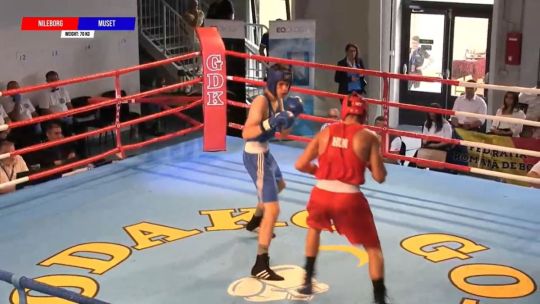
View On WordPress
#eduard mușet#știri box fălticeni#știri din fălticeni#știri fălticeni#știri fălticeni online#gheorgheni open#sport fălticeni#turneu internațional box
0 notes
Photo
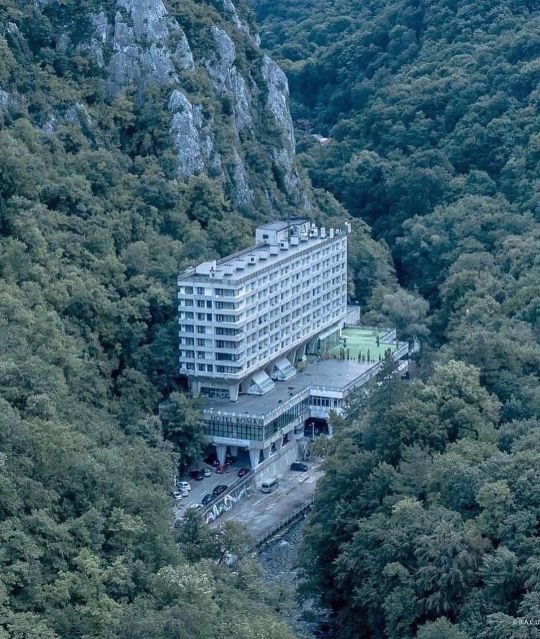
Dear friends , We are happy to announce that “Socialist Modernism in Romania and the Republic of Moldova”, the first photo album/digital guide in the 2nd release of @_BA_CU ‘s planned series, is available in 800 copies. Those who are interested in #SocialistModernism are able to order the book on 👉🏻 @fdestribute @fudeshopamazon 👈🏻distributor page, (Link in our profile👆🏻) ; link: https://www.amazon.de/dp/6069490975/ref=olp_aod_redir_impl1?_encoding=UTF8&aod= by selecting the Photo album from among the books listed. (Shipping worldwide with DHL) #SocialistModernism #_BA_CU The photo album includes landmarks of socialist modernist architecture in Romania and the Republic of Moldova – from 1955 to 1989/91. B.A.C.U. Association introduces and explains socialist modernist tendencies, it presents – in color photographs – a functional image of the buildings and their often original elements that synthesize local culture and traditions, while bringing us up to date with their current state of conservation. Print run 800 Pages 194+1 Spread/ Romania and the Republic of Moldova – SOC MOD Map Romanian, English Size 26×28.5 cm Weight 1.25 kg Designed and published by @_BA_CU Association The books pics don't count. 1st pic: Hotel Roman, Baile Herculane, România. Built 1974-76. Architect A. Muresan. 2. Hotel Cosmos, 2 Constantin Negruzzi Bd., Chisinau, Republic of Moldova, built in 1983, Architects: B. Banykin, I. Kolbayeva 3. Mihai Flamaropol Skating Rink (Patinoarul Mihai Flamaropol), Bucharest, Romania, opened in 1952 and rebuilt in 1974. 5 “Yu. A. Gagarin” Youth Center, Chisinau, Moldova. built in 1972. MoldGiproGrajdanSelStroi 7 "Mercur" Commercial complex, 1, Detunata, Gheorgheni, Cluj-Napoca, Romania, built in 60s 9 Romanita - Collective Housing Tower for small family units, Chisinau, Moldova, built between 1978-86, Architect Oleg Vronsky 10 Public utilities building for telephone and postal services, Cluj-Napoca, Romania, built between 1966-69, Architect Vasile Mitrea (c) BACU https://www.instagram.com/p/Cq0o82HMtgc/?igshid=NGJjMDIxMWI=
37 notes
·
View notes
Photo
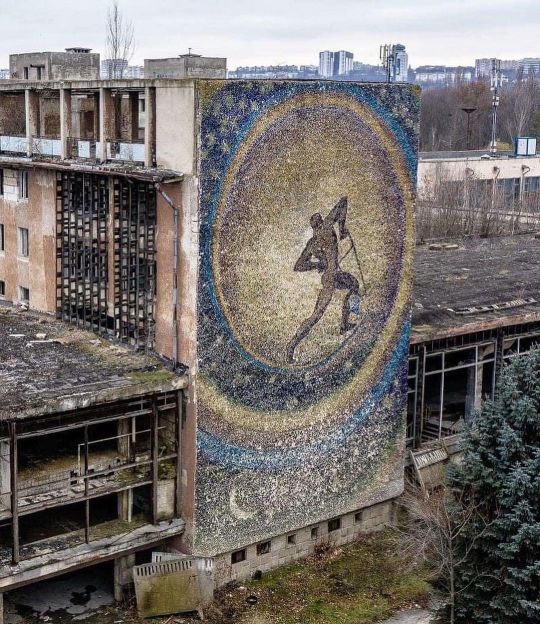
Dear friends , We are happy to announce that “Socialist Modernism in Romania and the Republic of Moldova”, the first photo album/digital guide in the 2nd release of @_BA_CU ‘s planned series, is available in 800 copies. Those who are interested in #SocialistModernism are able to order the book on 👉🏻@UrbanicaGroup @ushopamazon 👈🏻distributor page, (Link in our profile) ; link: http://urbanicagroup.ro/ushop/ or AMAZON: https://www.amazon.com/s?me=A33QJE9SPOCVM4&marketplaceID=ATVPDKIKX0DER by selecting the Photo album from among the books listed. (DHL Express Shipping worldwide) #SocialistModernism #_BA_CU The photo album includes landmarks of socialist modernist architecture in Romania and the Republic of Moldova – from 1955 to 1989/91. B.A.C.U. Association introduces and explains socialist modernist tendencies, it presents – in color photographs – a functional image of the buildings and their often original elements that synthesize local culture and traditions, while bringing us up to date with their current state of conservation. (available for order, shipping starting 1 November, 2020) Print run 800 Pages 194+1 Spread/ Romania and the Republic of Moldova – SOC MOD Map Romanian, English Size 26×28.5 cm Weight 1.25 kg Designed and published by @_BA_CU Association 7 pic: Hotel Roman, Baile Herculane, Roma^nia. Built 1974-76. Architect A. Muresan. 2. Hotel Cosmos, 2 Constantin Negruzzi Bd., Chisinau, Republic of Moldova, built in 1983, Architects: B. Banykin, I. Kolbayeva 3. Mihai Flamaropol Skating Rink (Patinoarul Mihai Flamaropol), Bucharest, Romania, opened in 1952 and rebuilt in 1974. 5 “Yu. A. Gagarin” Youth Center, Chisinau, Moldova. built in 1972. MoldGiproGrajdanSelStroi 9 "Mercur" Commercial complex, 1, Detunata, Gheorgheni, Cluj-Napoca, Romania, built in 60s 1 Romanita - Collective Housing Tower for small family units, Chisinau, Moldova, built between 1978-86, Architect Oleg Vronsky 8 Public utilities building for telephone and postal services, Cluj-Napoca, Romania, built between 1966-69, Architect Vasile Mitrea (c) BACU https://www.instagram.com/p/Cfh-pPeIVw3/?igshid=NGJjMDIxMWI=
3 notes
·
View notes
Text
CFR Călători informează că mai multe trenuri înregistrează întârzieri, din cauza condițiilor meteo nefavorabile. Este afectată, în special, circulația trenurilor de pe secțiile Petroșani-Târgu Jiu, Gheorgheni-Toplița și Timișoara-Caransebeș.
0 notes
Text
Project Justice: Jud. Florentina Balca: "De precizat este faptul ca in ultimii ani Judecatoria Gheorgheni a functionat cu un numar redus de judecatori."
Project Justice continua in anul 2023 in vederea cunoasterii continue si de educatie juridica a societatii privind managementul si functionarea instantelor, a justitiei din Romania. Din anul 2015 va sunt facute cunoscute cifre, statistici, situatii si stradania oamenilor din instantele si parchetele romanesti.
Va invitam sa cititi si sa trageti concluzii din interviurile anului 2023 unde veti…

View On WordPress
0 notes
Text
To Those We Lost (Hollandse Circus 3/4)
One late summer night in 1860, there was a mysterious fire on the grounds of De Fantastische Meester Mankarij's Hollandse Circus. The circus tent burnt to the ground, and so did several caravans, but most of the performers came out of it with minor injuries at worst.
There was one performer who was not accounted for, however, and that was the scarred young boy who had become the circus’ main moneymaker.
The funny part was, Messenblok’s great escape plan had really been quite easy.
Every now and then, very rarely, he was let out of his cage in order to stretch his legs. It was one of these nights when suddenly, he just happened to knock a torch over as he was walking by. It had not been an accident, but he had definitely made it look that way. He’d cried out “fire, fire,” and then ran for the circus tent, as if he meant to hide from the fire in there, but at the very last minute, he’d turned for the stables, grabbed the reins of one of the horses, and ridden for the docks.
And so, Siebren Csokas was free.
He got on the first boat bound for England. There - he ended up in a lousy little place with a name that ended with Thorpe - he hung around in the markets and listened to conversations between the merchants, listening for any word of anyone bound for further away, away from the coast. After a lifetime in Haag, Siebren was sick of coasts.
He hid in an Irish merchant’s cargo wagon, and after a few weeks of bumpy riding, he ended up in Birmingham.
An ugly place indeed, but heaven on earth for a hard bastard of a boy, like Siebren had become. And from there on, all the only remaining Csokas brother had to do, was find someplace to live, get a job, and work his way upward.
He’d wander the streets during the daytime, entering anything that looked like a business and asking - in fairly broken English - if there was any work for him. And again and again and again, he was turned away.
After a whole month of disappointment, scouring the streets for buildings he had yet to have entered, he was just about to give up. But then, he spotted a sign he did not think he had seen before, a sign that read “DR. CONSTANTINESCU’S PSYCHIATRIC CLINIC.”
And so, with nothing to lose, he entered, and that night, Siebren won bigger than he’d ever won before.
It turned out that Dr. Constantinescu actually needed an assistant to help him keep order in his patient files.
Csokas was a Romanian surname, which was something Dr. Constantinescu pointed out. Siebren explained the situation, omitting as many details as possible; he was abandoned as a little child along with his late brother Hendrik, and all he knew about his mother, was that she was from the city of Gheorgheni, Romania. He took care to greatly express his distress over not having been able to reconnect with his Romanian roots. Dr. Constantinescu, born and raised in Gheorgheni, Romania himself, was won over immediately.
Siebren had started the day homeless, jobless, broke and freezing, and ended it with a job, a bed to sleep in - an old guest bed in the doctor’s apartment on the floor above his clinic - and some hope that his life might finally become something good.
Dr. Constantinescu was an old widower with no children save for a daughter he regretted having lost touch with, which meant his life, now, was devoted to no more than two things: his work, and teaching his apprentice well, perhaps even well enough to inherit the little clinic someday.
He reminded Siebren of Douwe Dijkgraaf, and there was something lovely and safe about that.
The doctor taught his young apprentice everything he could teach about the science of psychology, he taught him to speak both English and Romanian like a native. But most importantly, he taught him to adjust and become an almost normal teenage boy in the Birmingham society, without asking questions about Siebren’s past. The young boy who was once a freak, though he might never stop feeling as if he was morbidly out of place, was turned into a sophisticated gentleman, well versed in the workings of a society he had never before been a part of.
Dr. Constantinescu’s teachings kindled a fascination in Siebren, a fascination with the inner workings of the human mind. He would “borrow” patient files from the cabinets to read at night, guess at a prognosis and possible details that might arise in later sessions, and then check back later to see whether or not he was right. And most of the time, he was.
He would dissect the way people looked and acted and spoke on the street; their body languages, the tones of their voices, the looks in their eyes, their choices of words. The boy learned to pick people apart. Not because his calling was to help them. Just because he wanted to understand them, because he felt he might never be quite like them.
When Siebren eventually decided he wanted to pursue the study of psychology at Birmingham University, Dr. Constantinescu made sure his young apprentice would ace the entrance exam like no other student.
Thanks to the fact Siebren had, in the doctor’s fond Romanian words, “a shining and brilliant mind,” and probably also as a result of the doctor’s good help, he passed with flying colors.
After his studies were finished and Siebren Csokas received a doctorate in psychology, he and Dr. Constantinescu ran the clinic together for a good few years, until the old man passed away, peacefully, in his sleep.
That could have broken Siebren’s spirit. He’d grown very close to this old man, he’d even thought of him as some kind of father, - it was strange, the old doctor always said Siebren was the spitting image of him in his younger days, - and to have him gone like that, for Siebren to be alone once again, it felt unbearably heavy.
But he reminded himself that now, he had another person dear to him, a new someone to make proud. He had not come this far for nothing. Now that he had inherited an entire clinic, a roof under his head, a business to keep in check, and a job that meant he could do some semblance of good. And now that he had something handfast right in front of him, it was easier for him than ever to make all of them proud; Hendrik, his mother, Douwe Dijkgraaf, Dr. Constantinescu… He’d pull through for them, and whatever he’d done until then to earn himself a doctorate, he’d keep doing it even better.
Though Siebren Csokas wasn’t bright-spirited in any way as a person, he was adored as a psychologist. Sometimes it was good for broken people to be faced with someone who could bring the truth down upon them, even if it was not a truth they liked, and Siebren, cynical as he was, was excellent at that.
On a good day, he had eight hour-long sessions back to back, and a good week consisted of six good days and Sunday to rest. The past few months had been nothing but good weeks, and by the looks of it, the following months were going to be just the same.
One day, as Siebren was dusting off the front in his waiting room, arranging the files behind it, he heard the shopkeeper’s bell ring, and then he heard the door close.
“Tijd niet gezien, Messenblok,” said an all too familiar voice.
Siebren felt something drain from him as he turned around, but it was not courage. No, he felt calm and still and ready, for whatever was about to happen.
“Good evening, van Manker,” he said politely, smiling as his visitor took off his hat, and Siebren registered immediately that van Manker’s manner was far from aloof; on the contrary, he seemed almost relaxed and friendly. This was a man visiting an old friend, it seemed. It was obvious that he was under the impression there was no bad blood at all between them, and that Siebren had no reason at all to want to see van Manker’s brains splattered across the floor.
“I saw the sign, kid, and I recognized your name,” said van Manker, grinning as he looked around. “I figured it was too good to be true, but by my beard, it’s you!”
He laughed, spinning his hat around in his hands, and Siebren smiled with him.
“Indeed it is me,” said the younger man. “I bet you thought you’d never see me again, huh? I certainly thought I’d seen the last of you,” he added, and there was nothing friendly in his voice, but van Manker did not seem at all fazed.
“Some place you’ve got yourself here, isn’t it?” van Manker said, and if Siebren was any self control poorer, he would have decked the man on the spot. But Siebren was smart, far smarter than he’d been when he was little Messenblok, and far, far smarter than van Manker.
“Want to see where the magic happens?” Siebren asked, smiling crookedly as if he was offering a treat to a dumb dog. “As a special treat for an old friend.”
“Boy, do I!” van Manker laughed heartily, and at Siebren’s gesture, he followed the younger man into the main office.
The main office would have been a cozy little room, but the large reclined hardwood chair in the middle sort of ruined the atmosphere. It was a prototype that an old friend of Dr. Constantinescu had developed; a nice and comfortable chair, with wrist and ankle shackles that could be activated at the press of a pedal, in order for the doctor to be able to restrain a possible violent patient.
It wasn’t a contraption he’d ever used before, mostly because he didn’t believe violence or physical restraint had anything to do within a psychologist’s office.
Today, the chair was not a trap to be used against an innocent, troubled person. Today, it was an excellent, symbolic opportunity to bring vengeance down upon the man that broke him all those years ago, using the second chance he’d been granted through the kindness of a complete stranger.
“You can sit down in the chair if you want,” Siebren said, feigning sheepishness, as if he was a shy newlywed young woman showing off her grand new home to all of her friends. And van Manker, ever the idiot, took the bait.
Siebren pressed the pedal down immediately, and so, van Manker was locked in place. The younger man smiled at his old ringmaster, and then he stepped away to lock the door.
“Kiddo,” van Manker laughed quietly, all humor gone from his voice now, “what are you doing?”
Siebren didn’t see fit to answer that question.
“Do you ever think about vengeance, van Manker?” he asked, calmly, watching the ringmaster as he crossed the room to open a drawer. “What a pretty thing it is,” he hummed as he pulled a knife out of the mess of tools in there. Van Manker seized up immediately, his face going white.
“Messenblok, you don’t have to-”
“That’s not my name,” Siebren said, eyes wide and patient as he walked back to the reclining chair, holding the knife in his steady, scarred hand. “Go on, mister ringmaster. You know what my name is.”
“Siebren,” van Manker gasped. “Siebren Csokas. You don’t have to do this, you- I did you a favor, you know. I didn’t want you leaving us, you know that,” he said, rambling panickedly as if he knew exactly what the star of his freakshow was going to do to him.
“Oh, van Manker,” Siebren chuckled, placing the knife down in the ringmaster’s lap, well aware he would not be able to reach it. He had to manually fasten the belt around van Manker’s skull, to keep his head dead still, but that allowed him a little demonstration of strength as he held the ringmaster’s head in place, as if to say, careful, you old fucker, I could break your neck if I wanted to. Siebren took the knife again. “Look at me, why don’t you?” he said patiently, stepping back. “I mean, really look at me. Look what you did to me, look what you turned me into. Does it not haunt you? It doesn’t haunt me, not in the way you think. I think it suits me, you see. But oh, if you only knew, the nights I’ve lain awake, thinking of all the things I’m going to do to get back at you for it.” He laughed, and when he really listened to himself, he sounded just a little insane. Even if that were the case, it was well justified.
“It doesn’t have to be like this, kiddo,” van Manker tried, edging away from the knife, even though it was far, far from his face. “You can- you can be nice about this. See it from the good side. Yeah?”
Siebren smiled again, taking a step closer, resting the cold blade on van Manker’s cheekbone. “You know, I’m not really surprised that you’re making it sound like this here, what I’m doing now, is me choosing bad when I could’ve chosen good,” he hummed, voice calm, almost sweet. “No, no, it’s not that simple. You see, this was me, all those years ago, choosing to survive when you fucked up my face and locked me in a steel cage. Because a soft child wouldn’t have lived through that, would he, Martin?”
Van Manker swallowed, sweat forming in beads at his temples. “No.”
“No, that’s right. I had to become the hard, terrible bastard I am today in order to make it through that shit in one piece. This is him, the bastard, repaying your oh-so-kind favor,” Siebren grinned, dragging the knife across van Manker’s cheek.
The ringmaster said nothing. A good choice.
“Do you still think I am being cruel? Fine. I don’t care. I will not pretend to be a saint, van Manker,” he said, and his voice turned steelier and steelier, and it was freezing cold when he hissed, “I have done my share of performing for you.”
Van Manker croaked out a “please.” Siebren did not know, nor did he care, what he was asking for, and so he ignored it.
“You took everything from me,” Siebren said, raising his eyebrows. “Hendrik is dead because of you. Dijkgraaf is dead because of you. If I am a monster, then it is because you created me that way.” He was almost out of breath, lightheaded, his hands shaking as adrenaline washed over him in bursts. This was what he’d been waiting for. “Look at me. Is it the scars, Martin? Is it the deep rifts in my poor, poor face that blinds you from seeing the earthly good in me? Am I condemned to be seen as a demon for the rest of my life, because of what you did to me in order to earn your precious coin?” he asked, tilting his head, the knife shaking. “Do you really not see, ringmaster, what an angel I am compared to you? Because I could have sunk to your level, but I did not?”
“If you kill me now,” van Manker panted, because somehow, he must have known, “you will have sunk to my level. Beneath it, in fact.”
“No,” Siebren said, and it sounded as if he was at the gates of peace. “If I kill you know, I will simply break even.”
He waited for the ringmaster to interject, and when he did not, Siebren kept talking. “I will have avenged my brother and Dijkgraaf, and that has been my life’s mission since I burnt your tent down in ‘59. I will have repaid my debts. My wretched soul will at last be redeemed.”
The light behind van Manker’s eyes was draining, even before Siebren had lifted the knife, and when he angled the tip in right under the ringmaster’s chin and jabbed it upward into the man’s brain, it gave off an odd sensation, like an empty bottle, sinking and hitting the ocean floor.
“I’ll mention your name in my nightly prayers, van Manker.” Siebren hissed, hair disordered and sweaty and falling into his wild eyes as he watched the ringmaster die. “Come any gods, I hope they rip you apart. I hope they make you ugly.”
1 note
·
View note
Photo

#cluj #clujlife #clujinsta #clujcity #clujvibes #clujview #clujnapoca_city #clujing #visitcluj #clujphotography #cluj4you #visitoradea #viataincluj #instacluj #oradeainsta # #oradealife #oradeainimagini #romania #manastur #oradeacity #international #florești #zorilor #zorilorcluj #gheorgheni #bailefelix #gheorghenicluj #marasti #oradea (la Vila Cristal Băile Felix) https://www.instagram.com/p/Cn6sHcvN6x6/?igshid=NGJjMDIxMWI=
#cluj#clujlife#clujinsta#clujcity#clujvibes#clujview#clujnapoca_city#clujing#visitcluj#clujphotography#cluj4you#visitoradea#viataincluj#instacluj#oradeainsta#oradealife#oradeainimagini#romania#manastur#oradeacity#international#florești#zorilor#zorilorcluj#gheorgheni#bailefelix#gheorghenicluj#marasti#oradea
0 notes
Text
Preşedintele Alianţei Maghiare din Transilvania, condamnat definitiv pentru șantaj, abuz în serviciu și instigare la delapidare
Preşedintele Alianţei Maghiare din Transilvania, condamnat definitiv pentru șantaj, abuz în serviciu și instigare la delapidare
Preşedintele Alianţei Maghiare din Transilvania, condamnat definitiv pentru șantaj, abuz în serviciu și instigare la delapidare
Curtea de Apel Târgu-Mureş l-a condamnat pe János Mezei, fost primar al oraşului Gheorgheni, pentru şantaj. Hotărârea definitivă pronunţată în a doua instanţă dispune condamnarea politicianului la trei ani de închisoare, cu suspendare pe o perioadă de patru ani, şi…

View On WordPress
0 notes
Text
Cheile Bicazului sunt cerute, din nou, în instanţă de Consiliul Judeţean Harghita
Cheile Bicazului sunt cerute, din nou, în instanţă de Consiliul Judeţean Harghita
Prefectul judeţului Neamţ, Adrian-Vasile Niţă, a declarat că instituţia pe care o conduce a primit o citaţie, în calitate de pârâtă, într-un dosar în care se solicită anularea procesului verbal de delimitare a traseului de hotar administrativ pe porţiunea comuna Gheorgheni – Tulgheş – Bicaz, scrie Agerpres.
„În fapt, este vorba despre acelaşi proces verbal de delimitare care a făcut obiectul…
View On WordPress
0 notes
Photo
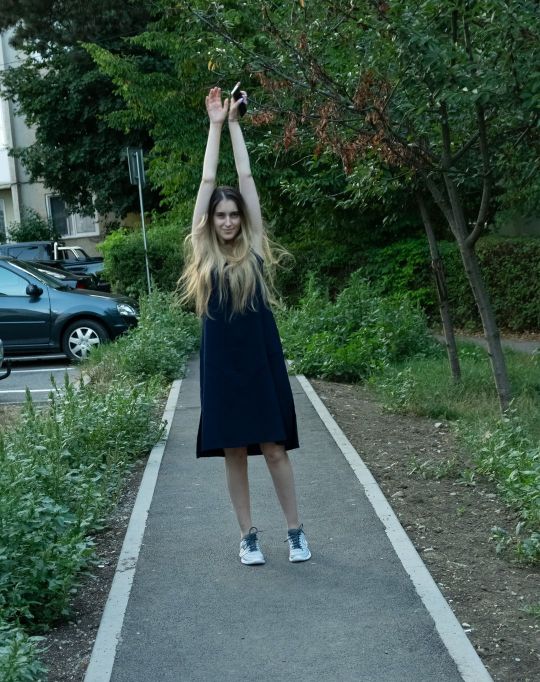
@gelu_stanculescu_photography @boudoir_photography_project @artonthewall.ro_store (la Cartierul Gheorgheni din Cluj-Napoca) https://www.instagram.com/p/CjTHK7tt65B/?igshid=NGJjMDIxMWI=
0 notes
Text
CLUJ-NAPOCA | Se poate și altfel. Traseu de caiac pentru nevăzători
CLUJ-NAPOCA | Se poate și altfel. Traseu de caiac pentru nevăzători
Mai multe persoane nevăzătoare au vâslit independent, pe lacul Gheorgheni, din Cluj-Napoca. Tinerii au fost ghidați de sunete emise de boxe amplasate pe mal.
Primul traseu de caiac accesibilizat din România a fost inaugurat luni, 26 septembrie, pe lacul Gheorgheni din Cluj-Napoca. Persoanele nevăzătoare au vâslit independent din caiace, ghidate de sunetele emise de boxele de pe margine. …
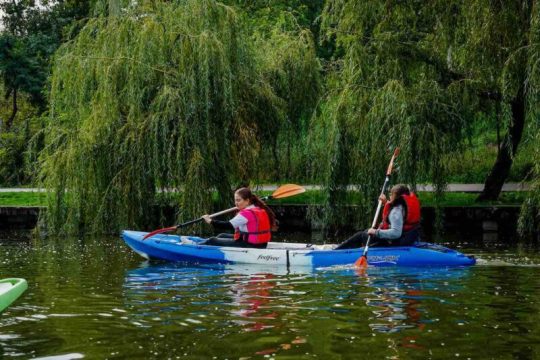
View On WordPress
0 notes
Text
Box: Medalie de argint pentru Iulian Buletică în finala turneului internațional "Gheorgheni Open"
Box: Medalie de argint pentru Iulian Buletică în finala turneului internațional “Gheorgheni Open”
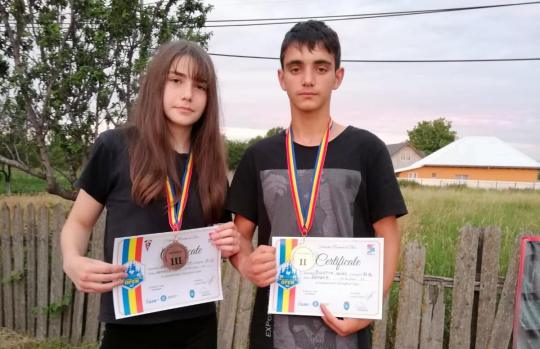
View On WordPress
#box fălticeni#știri din fălticeni#știri fălticeni#știri fălticeni online#gheorgheni open#sport fălticeni#turneul internațional gheorgheni
0 notes
Photo

Dear friends , We are happy to announce that “Socialist Modernism in Romania and the Republic of Moldova”, the first photo album/digital guide in the 2nd release of @_BA_CU ‘s planned series, is available in 800 copies. Those who are interested in #SocialistModernism are able to order the book on @UrbanicaGroup @UshopAmazon distributor page, (Link in our profile) ; link: http://urbanicagroup.ro/ushop/ or AMAZON: https://www.amazon.com/s?me=A33QJE9SPOCVM4&marketplaceID=ATVPDKIKX0DER by selecting the Photo album from among the books listed. (Shipping worldwide with DHL) #SocialistModernism #_BA_CU The photo album includes landmarks of socialist modernist architecture in Romania and the Republic of Moldova – from 1955 to 1989/91. B.A.C.U. Association introduces and explains socialist modernist tendencies, it presents – in color photographs – a functional image of the buildings and their often original elements that synthesize local culture and traditions, while bringing us up to date with their current state of conservation. Print run 800 Pages 194+1 Spread/ Romania and the Republic of Moldova – SOC MOD Map Romanian, English Size 26×28.5 cm Weight 1.25 kg Designed and published by @_BA_CU Association The books pics don't count. 9 pic: Hotel Roman, Baile Herculane, România. Built 1974-76. Architect A. Muresan. 2. Hotel Cosmos, 2 Constantin Negruzzi Bd., Chisinau, Republic of Moldova, built in 1983, Architects: B. Banykin, I. Kolbayeva 3. Mihai Flamaropol Skating Rink (Patinoarul Mihai Flamaropol), Bucharest, Romania, opened in 1952 and rebuilt in 1974. 5 “Yu. A. Gagarin” Youth Center, Chisinau, Moldova. built in 1972. MoldGiproGrajdanSelStroi 7 "Mercur" Commercial complex, 1, Detunata, Gheorgheni, Cluj-Napoca, Romania, built in 60s 1 Romanita - Collective Housing Tower for small family units, Chisinau, Moldova, built between 1978-86, Architect Oleg Vronsky 10 Public utilities building for telephone and postal services, Cluj-Napoca, Romania, built between 1966-69, Architect Vasile Mitrea (c) BACU https://www.instagram.com/p/CndB1nds-gb/?igshid=NGJjMDIxMWI=
48 notes
·
View notes
Text
M-am saturat de numele de localitati rebotezate in Ardeal dupa 1918 si 1945 de catre Bucuresti!
Avem denumirile istorice si, mai ales, avem dreptul la aceasta continuitate istorica si a memoriei colective.
O intrebare legitima si ardenta: Cu ce drept ne distorsioneaza Bucurestiul perceptia spatiului locuit, a etnodemografiei si a istoriei locuirii in Ardeal? Ce-ar fi fost, sa se fi reinventat de la Budapesta sau Cluj sute de denumiri de localitati din Muntenia si Moldova dupa 1916? Legitimitatea morala ar fi fost la fel, ZERO. Doar ca deciziile Bucurestiului s-au impus si au devenit parte a unei noi perceptii, falsificate, epurate etnic a realitatii noastre cotidiene.
Reinventarea arbitrara a denumirilor unor localitati, deseori urechistic, mai ales in zone multietnice sau de alta etnie decat cea a natiunii titulare are efect de spalare pe creier la nivel colectiv si la scara istorica. Si tocmai asta s-a urmarit peste tot unde s-a pus in practica - cam in toate tarile Europei de (Sud)Est, adica NU doar in Romania.
Asadar, propun sa folosim cat mai des si cat mai consecvent vechile denumiri de localitati - si poate si decidentii politici vor trece candva inapoi la acestea! Sau, cel putin, le vom (re)aminti si lor de ...amintirea reala a locurilor pe care le reprezinta si le administreaza.
EXEMPLE
Cluj - nu Cluj Napoca
Oradea Mare - nu Oradea
Satmar - nu Satu Mare
Giurgeu-Sanmiclaus - nu Gheorgheni
Sebesul Sasesc - nu Sebes
Reghinul Sasesc - nu Reghin
Jacodu Romanesc, nu Jacu
Feneșu Unguresc - nu Vlaha
Feneșu Sasesc - nu Floresti
Pischi - nu Simeria
Zoltan - nu Mihai Viteazu
Diciosanmartin - nu Tarnaveni
...plus cateva zeci sau sute de localitati din Tinutul Secuiesc / Tinutul Sasesc "reinventate" urechistic dupa sonoritate, ca sa sune cat mai "autentic romanesc", cu toate ca in versiunea originala maghiara, denumirea inseamna cu totul altceva:
Exemple:
Sepsi-Sangeorgiu - nu Sfantu Gheorghe
Sarhighi (Gyergyószárhegy) - nu Lazarea
Miclosfalau, Sanmiclaus - nu Nicolesti
Sfantu Spirit (Szentlélek) - nu Bisericani
Ferihaz (Fehéregyháza) - nu Albesti
Barot - nu Baraolt
Daia Secuiasca - nu Daia
Sarombarc (Sáromberke) - nu Dumbravioara
Matefalau (Madéfalva) - nu Siculeni
Vorumloc (Wurmloch) - nu Valea Viilor
Stona (Stein) - nu Dacia
Besa (Peschendorf) - nu Stejareni
Prostea (Probstdorf) - nu Stejarisu
etc. etc. etc.
--
Redenumirea e intr-adevar problematica. Dar de unde premiza ca "Bucurestiul" a modificat numele? O amica istorica imi povestea de decizii luate la nivel judetean in Ardeal- ar fi interesanta o cercetare a actorilor care au dus la aceste redenumiri- de la politic la academic, de la centru in teritoriu. In plus, e interesanta scara regionala a acestor redenumiri dupa 1918- Bratislava e un nume nou, inventat ad-hoc, inante se folosea doar Pressburg/Poszony/Presporok. Ce facem cu astfel de nume azi? sau Zrenjanin in Banatul sarbesc, inlocuind Nagy Beckerek etc.
Dupa 1918 initiativa de redenumire clar pornise de la centru. La fel si in cazul Cluj Napoca.
...iar in Secuime ma indoiesc sa fi fost decizii pornite de la nivel local de a Inventa denumiri cu sonoritate nu doar romaneasca ci explicit "regateneasca" - adica terminate un -esti sau -eni, lucru practic inexistent in Ardeal inainte de 1918 in zonele preponderent neromanesti. Se vede aici o abordare sistematica, cu agenda politica cat se poate de clara - deci autorii trebuie cautati la nivel central.
PS: Cum spuneam, Romania nu e exceptie de la regula - a se vedea Bulgaria sau Grecia sau Cehia, cu practici si mai radicale de epurare "toponimica" a tot ceea ce fusese inainte preponderent turcesc si musulman resp. german in Cehia. Similar a fost si in Bosnia, in timpul razboiului dupa 1992, doar ca din partea sarbilor.
Cel mai bizar episod s-a consumat in RO imediat dupa 1920, cand unele localitati secuiesti si sasesti au primit pt f scurt timp numele unor politicieni regateni ai vremii, gen "Titulescu" sau asa. Hibrisul si triumfalismul nationalist-colonial la apogeu. Dar s-a renuntat apoi....
Cum gasim un raspuns la intrebari de genul: Oul sau gaina?
-Cine genereaza coruptia? Cel care da sa reuseasca, sau cel care primeste/accepta?
-Nu cumva sunt la fel cei care cauta portite in legi cu cei care le lasa disponibile?Cand vorbim in acest context de "Bucuresti" de fapt facem referire la o mentalitate alterata, contraproductiva, dar nu exclusiva.
O situație interesanta a fost în sudul Basarabiei în interbelic, localitățile aveau denumiri rusești, iar atunci românii au schimbat denumirile rusești cu vechile denumiri turcești.
cred ca astea se "vand" poporului la pachet: schimbarea unor denumiri cu scopul de a face sa pare naturala, fireasca, "logica" schimbarea administratiei publice resp. a intregii realitati a unei regiuni...
evident, "floresti" transmite o cu totul alta naratiune decat "fenesul sasesc". pentru setarea unui mental nationalist la populatia romaneasca, e contraproductiv sa ai un "fenes sasesc", fix la portile clujului. asa ca inventezi ceva tot cu "F" si cu -esti in capat, si ai creat un confort identitar maxim romanilor nationalisti, la pachet cu o frustrare identitare maxima pentru maghiarii din zona - ceea ce se urmarea in ultimii 100 de ani.
conteaza ca starea actuala sa fie perceputa ca o anomalie, o problema (mostenita de demult), deci ceva ce ar trebui schimbat. atunci se vor gasi si majoritati in CL ale localitatilor. daca se va intampla in cateva comune, sunt sanse ca bulgarul de zapada sa creasca, rostogolindu-se la vale si sa creeze o autodinamica favorabila re-transilvanizarii toponimelor de la noi...
--
fiecare tara si regiune are specificul si problemele ei..numele unor localitati, pe cat de banal pare, are impac major asupra cum se percept locuitorii acesteia in relatia cu respectiva localitate.de ex. daca clujul s-ar lapada de peninbilissimul napoca, ar deveni din nou un oras civic si burghez. pentru ca acuma este doar asa, incipient, modest si in cateva oaze. il vad in continuare prepdonderent ca pe un desert criptonationalist, pseudoeuropean si neoconsumist.
--
Satucul “Gainari” ne informa despre fermele de gaini tinute de calugarii abatiei cisterciene de la Cârta, cea mai estica abatie a ordinului din Europa. Au raspandit goticul si sistemul moraritului hidraulic in Transilvania. Cu uiumul colectat la moara isi tineau gaini in satul vecin. De cativa ani se numeste “Poenita”. Suna poate mai romantic dar s-a trunchiat o poveste
Dar ce te faci daca peste 30 ani locuitorii (constienti de insemnatates istorica) cer redenumirea lui? O tot schimbi ?
dar ce te faci daca localnicii care nu-si mai cunosc istoria vor sa puna tabla pe biserica, vor sa arunce gunoaie la marginea satului, sa maltrateze casele vechi, sa betoneze satul cu totul, sa puna difuzoare in loc de clopote sau sa demoleze un monument istoric...!?
--
Cel putin sa duca treaba pana la capat. Sighisoara poate deveni fara probleme Vlad Tepes City. O autostrada ar lega Vlad Tepes City de Orasul Stalin ocolind Saschizul Nesasesc si pe Mihai Viteazu Zoltareanul spre est si pe dusmanii europeni prin Ungaria e Basarabia si Napoca in vest.
De acord! Sa mergem pana la capat cu rebranduirea imperial-coloniala a oraselor din Ardeal!
EXEMPLE:
Tzepeshtown sau Voivodeni in loc de Sighisoara,
Iohannisbourg in loc de Sibiu,
Brazzaville in loc de Brasov
Napooka in loc de Cluj
Martinique in loc de Diciosanmartin
New Orleans in loc de Odorhei
Boston in loc de Botosani
--
Aș avea vreo două duzine de asemenea "perle" din fostul județ Ciuc:
Zsögöd nu este Jigodin, că doar nu provine din "jigodie"!
Szentkirály ar fi Sfântul Rege, nu Sâncrăieni;
Szentimre ar fi Sfântul Emeric, și nici de cum Sântimbru;
Csatószeg ar fi Cătunul lui Csató, și nici de cum Cetățuia;
Szentlélek ar fi Sfântul Duh/Spirit, și nici de cum Leliceni;
Mindszent ar fi Toți Sfinții (Toussaint în franceză, Aller Heiligen în germană) și nici de cum Misentea;
Gyímesfelsőlok nu se traduce cu Lunca de Sus, și nici Gyímesközéplok cu Lunca de Jos;
și s-ar putea continua cu comunele din zona Gyergyó (Gheorgheni), Udvarhely (Odorhei) Keresztúr (Cristur), Parajd (Praid), Zetelaka (Zetea) Lövéte (Lueta !), Kézdiszentlélek (Sânzieni), Dálnok (Dalnic), Bereck (Brețcu), Sárfalva (Tinoasa), Bögöz (Mugeni, de la vaca, care muge), Csomafalva (Ciumani, de la ciumați ?), Nyárádtő (Ungheni), Marosvécs (Brâncovenești !?), etc., etc., - toate cu denumiri schimonosite și improprii, departe de înțelesul lor original, multisecular ! Dar, așa s-a vrut, în mod intenționat !.. Dacă aceste "rebotezări" nu constituie un furt de nume propriu, și un genocid cultural, atunci nimic în lume !..
Chiar și cei mai mari naționaliști, francezii, au lăsat Strassburgul, doar fonetic, după pronunția franceză, Strasbourg capitala Alsaciei, ș.a.m.d., doar noi, și noi...
0 notes
Photo
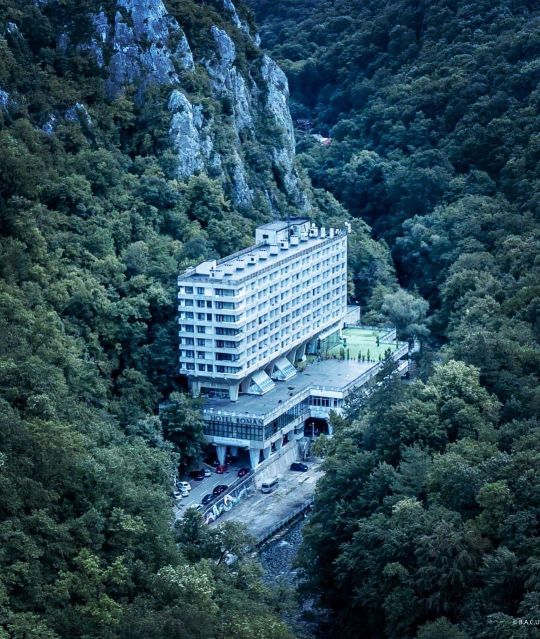
#Repost @utilitarianarchitecture ・・・ Dear friends , We are happy to announce that “Socialist Modernism in Romania and the Republic of Moldova”, the first photo album/digital guide in the 2nd release of @_BA_CU ‘s planned series, is available in 800 copies. Those who are interested in #SocialistModernism are able to order the book on 👉🏻 @fdestribute @fudeshopamazon 👈🏻distributor page, (Link in our profile👆🏻) ; link: https://www.amazon.de/dp/6069490975/ref=olp_aod_redir_impl1?_encoding=UTF8&aod= by selecting the Photo album from among the books listed. (Shipping worldwide with DHL) #SocialistModernism #_BA_CU The photo album includes landmarks of socialist modernist architecture in Romania and the Republic of Moldova – from 1955 to 1989/91. B.A.C.U. Association introduces and explains socialist modernist tendencies, it presents – in color photographs – a functional image of the buildings and their often original elements that synthesize local culture and traditions, while bringing us up to date with their current state of conservation. Print run 800 Pages 194+1 Spread/ Romania and the Republic of Moldova – SOC MOD Map Romanian, English Size 26×28.5 cm Weight 1.25 kg Designed and published by @_BA_CU Association The books pics don't count. 1st pic: Hotel Roman, Baile Herculane, România. Built 1974-76. Architect A. Muresan. 2. Hotel Cosmos, 2 Constantin Negruzzi Bd., Chisinau, Republic of Moldova, built in 1983, Architects: B. Banykin, I. Kolbayeva 3. Mihai Flamaropol Skating Rink (Patinoarul Mihai Flamaropol), Bucharest, Romania, opened in 1952 and rebuilt in 1974. 4. “Yu. A. Gagarin” Youth Center, Chisinau, Moldova. built in 1972. MoldGiproGrajdanSelStroi 5. "Mercur" Commercial complex, 1, Detunata, Gheorgheni, Cluj-Napoca, Romania, built in 60s 6. Romanita - Collective Housing Tower for small family units, Chisinau, Moldova, built between 1978-86, Architect Oleg Vronsky 7. Public utilities building for telephone and postal services, Cluj-Napoca, Romania, built between 1966-69, Architect Vasile Mitrea (c) BACU https://www.instagram.com/p/CfLRdzpqsXm/?igshid=NGJjMDIxMWI=
0 notes
Photo
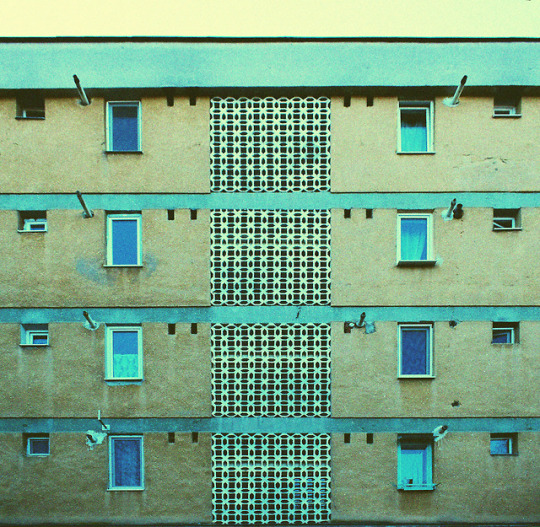
Cartierul Gheorgheni, Cluj
© Grecu Cristian, 2018
#socialist#modernism#socialistmodernism#facade#pattern#block of flats#cluj#clujnapoca#gheorgheni#architecture
1 note
·
View note